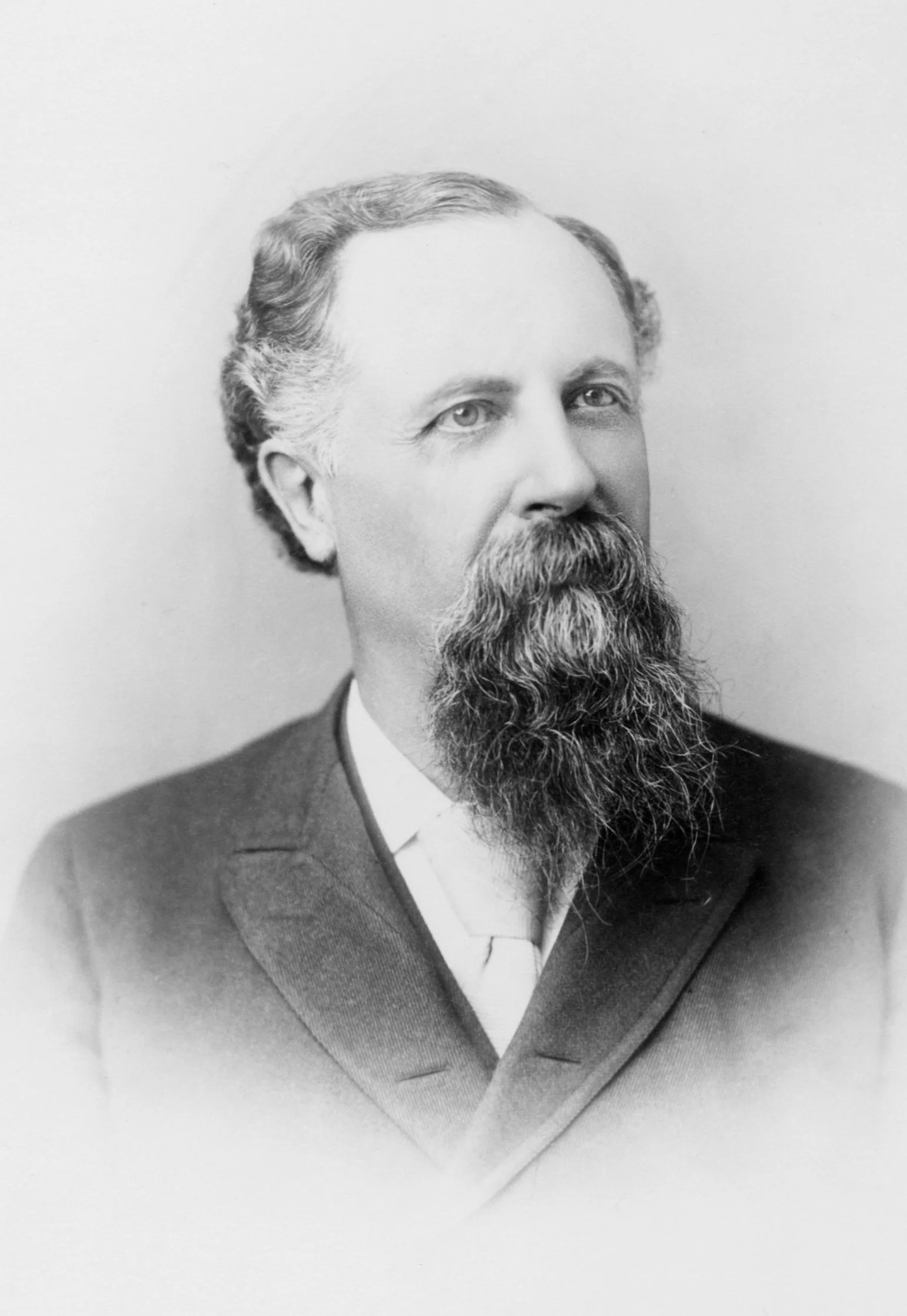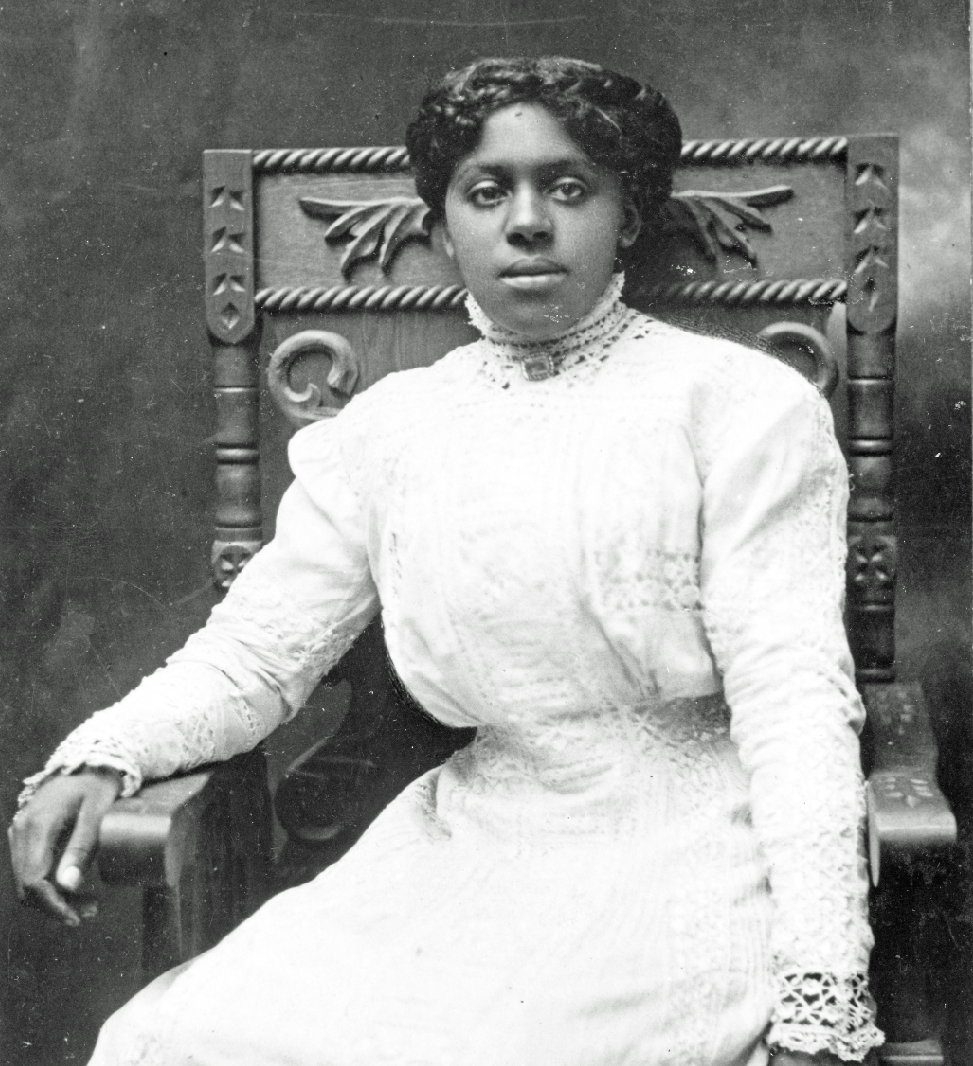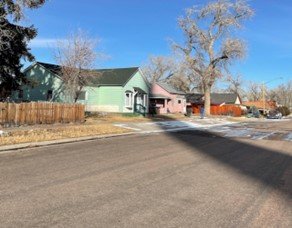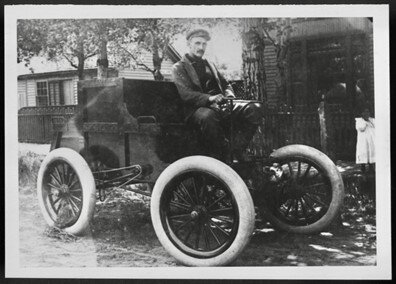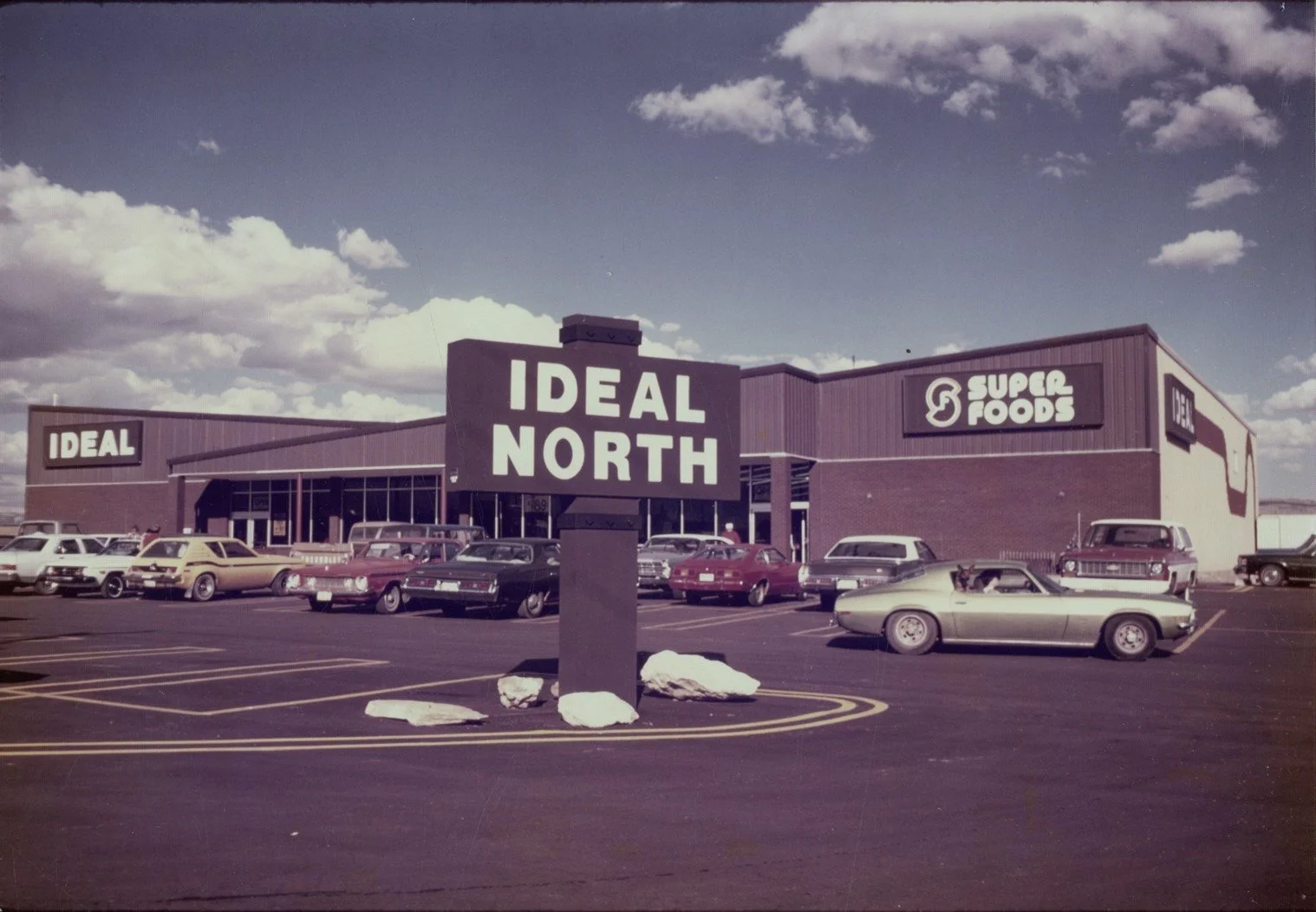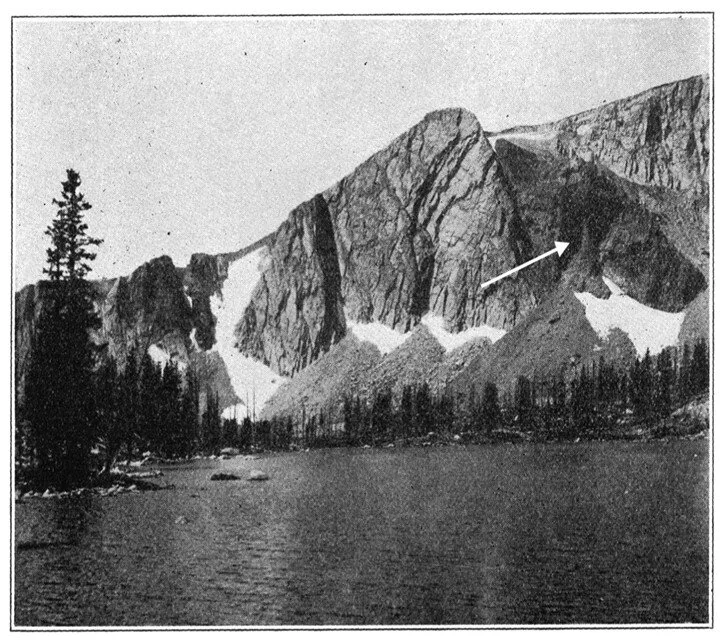
Ranch Tours Archive
The Cattlewomen of Albany County publish informative ranch histories in brochures that accompany their yearly ranch tours.
Looking for something specific?
Search for people, places, businesses, buildings, and other stuff related to Albany County and Laramie, Wyoming. Or explore the latest additions below.
For a better search experience, use specific words and phrases, like “Thornton Biggs”, “Professor Larson”, “railroad barons”, “statehood history”, “Old Carroll House”, etc.
Latest Additions to the Archives
M.C. Brown’s legal career spanned 60 years and thousands of cases during the years Wyoming was moving from territory through early statehood. President William McKinley’s appointment of Brown to a federal judgeship in Alaska in 1900 proved disastrous for the attorney, however, who returned to Wyoming where he continued to practice law, but on a much smaller scale.
Two women who became pioneering Wyoming physicians both graduated in the 1890s from the same medical school in Keokuk, Iowa. They weren’t the first in the U.S.; Dr. Elizabeth Blackwell has that honor. She graduated from medical school in New York in 1849. Also, an intriguing listing in the earliest Laramie City Directory by J.H. Triggs, published in 1875, shows “Mrs. Babcock, doctoress.” So far nothing more has been found about her, she does not turn up in any other Laramie records that have been consulted.
Of the 8,207 residents enumerated in the 1900 census for Laramie, Wyoming, ninety were African American. Of these, seven were girls of school age, but only two were enrolled. Although not written about in any historical overview of Laramie, one, Carrie Burton, would overcome adversity and go on to be the first African American woman to attend the University of Wyoming, a well-known New Yorker and the woman profiled in the 1972 Boomerang article.
In early spring 1876, the Metzes traveled the wagon road from Cheyenne to Fort Laramie and Custer. It is not clear which direction they were going when they were attacked on April 16, 1876. There were no survivors of their little group of four that included Mr. and Mrs. Metz, their driver named “Mr. Simpson,” and another woman.
Probably the most cohesive neighborhood in Laramie is the West Side--not to be confused with West Laramie, which is beyond the Interstate. There’s a sense of place for folks living on the West Side which explains much of its attractiveness–a strong attachment that may seem unusual to residents of other Laramie neighborhoods
Albany County was created by the Dakota Territory legislature in 1868. Learn about the man who had significant impact on the county and its county seat.
New towns need milk, and Laramie City in 1868 was no exception. With no established farms in the vicinity, one enterprising individual arrived at the new town site with dairy cows. A newspaper article written by W. E. Chapman claimed that Catherine Mary Erhardt (1827-1921) had a “monopoly in the milk business” in Laramie. He goes on to say that “Indeed, she was about the only person who served milk for the first five or six years of the city’s existence.”
Dale St. John was stationed aboard the USS Mahan on December 7, 1941, when it was attacked by Japanese kamikaze planes. He survived to tell the story.
Edgar Wilson “Bill Nye” (1850-1896) was editor of the Boomerang for two short years and might have continued longer had it not been for a nearly fatal bout with spinal meningitis. The 1883 illness required him to recuperate elsewhere than the Gem City, and left him with a “delicate” constitution, as those who knew him remarked.
When Emma Howell Knight (1865-1928) became a widow at age 38, she was left with four children ages 2 to 12. This was not likely the way she pictured her life unfolding. Her husband Wilbur Clinton Knight (1858-1903) was just 45. No one could have predicted that after a sudden five-day illness he would die of what the doctors said was inoperable peritonitis caused by a ruptured appendix.
The time: Saturday, May 7, 1898. The place: Laramie, Wyoming. The occasion: the city’s first steam-powered “horseless carriage” made its debut with Elmer Lovejoy, its inventor, in the driver’s seat. This was but one of many highlights in the fascinating life of one of Laramie’s most significant and widely known residents
Elmer Lovejoy (1872-1960) was widely viewed as “one of Laramie’s busiest and most distinguished mechanics in the past half century,” according to Laramie reporter Vandi Moore. In addition to introducing his “horseless carriage” as the first automobile built west of the Mississippi River, he made many other contributions
If it hadn’t been for Grace Raymond Hebard, University of Wyoming’s first librarian and a Board of Trustees member, hardly anything would be left today to mark the location of Fort Sanders three miles south of Laramie. This military outpost was authorized by the U.S. Department of War on July 10, 1866, and construction commenced two days later. Within three months Fort Sanders was occupied, though building and fully staffing it continued through 1867.
Often there is a tantalizing bit of history packed into the name of a place. Cheyenne native Mel Duncan (1931-2007), a veteran who served 43 years with the US Air Force, uncovered much of that history with his 1991 booklet “Place Names of the Medicine Bow National Forest.”
A bridge, locally called a “viaduct” was built in 1929 at University St., to connect the West Side to downtown with the grand opening in January 1930. The cost was $190,000, shared by the city and the UPRR. Some older buildings along University were removed for the new bridge. The two grade level crossings at Grand and Fremont were closed; a temporary one was constructed at Garfield St.
Learn about one of Laramie’s oldest neighborhoods in the first of a three part series on the West Side.
If you wander the summit of the Laramie Mountains as dusk falls, chances are you will spot mysterious creatures silhouetted against the evening sky—giants forever waiting by their castles, life-like but never moving. But if you get too close, they disappear, no matter how stealthily you approach. In their place are peculiar stacked stones and huge rounded masses of rock.
Looking west from Laramie three prominent mountainous formations are visible. They are the usually snowcapped Medicine Bow Peak, Jelm Mountain with its reflective observatory building, and the long high ridge known as Sheep Mountain. What most people do not know is that nearly all of Sheep Mountain is a national game refuge. It is one of only a handful in the United States.
Hopes were raised in Centennial, Wyoming with news that “the railroad should be ready in a few months.” The announcement ran in the July 16, 1902 first issue of The Centennial Post, a newspaper founded by the railroad promoters. Five years later, the town was still waiting for the train to arrive.
This is not about Leslie Gore (the singer) nor Leslie Uggams (the actress) and not Leslie Neilson (the actor) but Leslie, Wyoming.
The Happy Jack Road (WY 210) at exit 323 on I-80 is a popular back road to Cheyenne. How did it get that name?
NOTE SINCE THIS ARTICLE WAS PUBLISHED IN THE BOOMERANG, THE CITY HAS RETURNED THE STREET TO ITS PROPER NAME - WHY? READ ON!
None of Laramie’s earliest residents actually owned the land they built their homes and businesses upon inside the city limits. So, who did?
An excursion to Centennial has long been an adventurous getaway from Laramie.
When Laramie was founded in 1868, barbers appeared on the scene almost immediately. Not hairdressers--women didn’t routinely get haircuts here until 1915. Read on for more information on Laramie barbers and hairdressers.
In 1901, Laramie had seven grocery stores and four meat markets, most in the downtown area. The one exception was John Anderson’s market at 308 S. Pine on the West Side. Meat and sometimes fresh produce were mostly sold at separate businesses then and none were self-service as we know it today. Much would change in the coming years.
From 1868 to 1890, Laramie’s first 22 years, there were over 40 different grocery, bakery, and meat market proprietors. This estimate is based on newspaper advertisements. Most stores were in the four blocks of 2nd St., from University to Custer.
Laramie residents were eagerly looking forward to Thursday, September 8, 1949. That was grand opening day for Laramie’s new WYO Theater. But was it really new? Yes and no. The WYO was a new name, but the building was a remodel of the Crown Theater on 5th St. that opened on September 2, 1928. It has been mostly closed for several years but efforts are underway to restore it for community use.
There wasn’t much doubt about what Arvin Martinez was going to do when he graduated from Laramie High School in 1986. He would continue his after-school activity of learning the automotive radiator business.
If you hanker for some Wooly Boogers, Hare’s Ear, Buzzballs, Micky Finns, Adams, Caddis or other delicacies, the West Laramie Fly Store has been the place to go since the 1950s. For generations of residents and non-residents, it’s a traditional stop before driving on to the many popular fishing spots in Albany County and beyond
On May 10, 1871 the Laramie Sentinel announced that “the Richard Brothers will in a few days have in operation the most extensive brick works this side of Omaha. They have located their yard about a mile southwest of town, upon one of the finest beds of clay we have ever seen
Early Laramie newspapers - successes, failures and some scoundrels very early on.
Laramie has had drug stores since the day the first train reached the tent city that sprang up in 1868. In fact, the first one might have been here even before the railroad.
In mid-day of June 20, 1989, a fire occurred in downtown Laramie. It quickly spread from 317 S. 2nd St. to adjacent buildings at 315 and 319 S. 2nd St. It almost had a tragic ourcome.
The historic and beloved Scandinavian Lutheran Church sits deserted and forlorn at 201 S. Pine St. For years it has contributed to the unique character and appearance of Laramie’s West Side Neighborhood. But this piece of history is endangered; it has been neglected for the past several years and is badly in need of restorative efforts.
Can a demolished house still tell us valuable stories about Laramie’s history? Consider the stately Donnellan home. It stood at 605 E. Grand Ave. for more than 75 years before being razed.
Many churches in Laramie have moved location and some have been abandoned.
One of the hallmarks of downtown Laramie is the abundance of historic buildings owned and maintained by long-standing local businesses. The structure on the northeast corner of 2nd St. and Grand Ave. is a quintessential example of this proud tradition.
Of the many occupants of the 1888 historic house at 620 S. Seventh St. in Laramie, longest resident was Martha Stickney who lived there for 33 years. This Missouri native (1842-1932) had three husbands; she was twice widowed and once divorced.
The house at 318 S. 15th St. was designed by architect Fredric Hutchinson Porter (1890-1976), a native of Massachusetts who settled into a Cheyenne practice around 1921. He designed it in 1922, so it was quite early in his career.
The house in Laramie that locals call “the Old Carroll House” takes the prize for having the most confusing history in town.
The original plan for St. Matthew’s Cathedral. Construction of the cathedral posed questions about the origin of the building stone.
Laramie’s earliest opera houses
Signs of civilization on the frontier
Two historically significant houses at 719 and 919 Grand Ave. are within two blocks of each other in the nationally recognized University Neighborhood Historic District of Laramie.
On January 22, 1906, some 150 Laramie citizens left winter outside and climbed a flight of heavy oak stairs to the second floor of the new building at the corner of Fourth and Grand. In the warm well-lit lecture room, they listened as civic leaders spoke proudly, eloquently and at length about the Albany County Public Library, now housed in its own building—a gift of one of the wealthiest men in the world, Andrew Carnegie.
From its founding in 1886, the University of Wyoming suffered a lack of funding from the Wyoming Territorial Legislature. Within three years of UW accepting the first students in 1887, new money flowing from the federal government provided the bulk of operating expenses. The funds were tied to the creation of an agriculture school and agricultural experiment stations. Without those, the federal money would not be forthcoming, and the university itself might cease to exist. The latter nearly happened!
To the right of the entrance to the Laramie Plains Civic Center’s Gryphon Theater, there is a large bronze bell. It has two inscriptions. The first denotes the year that the bell came to Laramie, “Laramie High School August 1900.” The second appears to indicate when the bell was placed on a low concrete pedestal at the northeast corner of the Center before being moved inside, “Placed Senior Distinction Day Class of 1951.” But what connects the two?
There was a different look to Laramie streets before automobiles. Where the trains didn’t go, horses provided transportation until autos finally took over.
A Wyoming Constitutional amendment prohibiting alcohol went into effect on June 30, 1919. About six months later the 18th Amendment to the U.S. Constitution became effective. In 15 years of Prohibition, Wyoming’s most heinous crime of the entire era happened in Albany County.
It’s hard to imagine the excitement when the Ringling Bros. train with over 40 cars pulled into Laramie. The town and countryside had been plastered with billboards months in advance. Its spectacle of July 30, 1909 left everyone talking for years.
Laramie’s first bowling alley was in the “Theatre Saloon” leased by Charles Kuster on First St. For a few months in 1870 he advertised “Two good ten-pin alleys, free to patrons of the bar.”
In pre-1900 Laramie, women with time on their hands visited each other in very prescribed ways. It might do for some to visit over the back fence while hanging up laundry, but that was the maid’s job in many Laramie homes. For genteel Laramie women, casual meetings happened in churches and stores, but a visit in someone’s home was covered by much more rigid customs.
Once there were 24 different school districts in Albany County. They offered whatever classes were needed at over 300 locations in the county. However, not all were active at the same time. District #1 served the city of Laramie with several school buildings, but also operated 11 rural schools. The other 23 rural districts in Albany County ranged all the way from Esterbrook in the north (now part of Converse County) to Mountain Home on the Colorado border.
Albany County is one of seven counties in Wyoming where all the various school districts are now combined into one for elementary education. Rural and city schools are under the same umbrella. But it wasn’t always that way.
Medicine Peak quartzite started as quartz sand, became sandstone, and then was metamorphosed under intense pressure to its final form—very hard rock that sparkles in the sun. Yet even with this major transformation, the quartzite still provides clues about its ancient birthplace
For centuries countries have named their warships. Names have included adjectives such as the United Kingdom’s HMS Invincible. Other choices have been for fierce battles such as the U.S. Navy’s USS Tarawa and for prominent people; the USS Theodore Roosevelt aircraft carrier is an example. In the U.S. Navy, the most powerful ships of the day have been honored with the names of states. In the case of Wyoming, there have been three such ships that have been christened for the State of Wyoming
The first few years after WWII were no ordinary time for Laramie and Wyoming. Weddings proliferated and so did a baby boom, though both had begun earlier as the pre-war buildup ended the Great Depression. Cynics said that men who became fathers during the war were hoping to avoid the draft—a ploy that did not work for most. As the war dragged on, married men with children were drafted or called up too.






